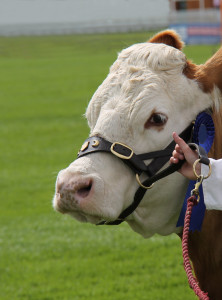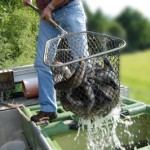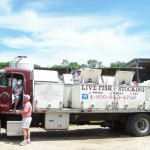 Countless hours are spent preparing a project heifer or steer for show day.
Countless hours are spent preparing a project heifer or steer for show day.
Early mornings and late nights are consumed with washing, feeding, clipping, and practicing. All of that work accumulates for ‘5 minutes of fame’ – the brief time when an animal walks into the ring and gets a chance to impress the judge. After a few laps around the ring, exhibitors get a chance to display their animal’s side profile, then animals are pulled in, placed and the class is over.
When all is said and done, exhibitors and their projects have only been in the ring for a few short minutes, even in large, competitive classes. How can exhibitors make the most of those few minutes, while the judge contemplates his or her decision? How can they make sure their animals are presented to perfection during that time, giving the judge the best look possible?
Honor® Show Chow® Ambassadors Dave Allan, Bob May, and Kirk Stierwalt have had decades of combined show industry experience and all have had the opportunity to judge showmanship on a regular basis.
Now, they are sharing their top five showmanship tips based on their expertise and experience to help exhibitors and their projects excel in the ring:
1. Teach cattle manners.
“Cattle need to know the cues and fundamentals to be shown properly in the show ring,” says Stierwalt. “It’s hard to win, even if you have a good calf if you can’t get it set up.”
Practicing at home and in various environments is critical. The only way for an animal to learn cues and get comfortable showing is to practice. Practicing in variable environments – whether that be indoor or outdoor, individually or with a group, with background noise or without – can help prepare your animal for a situation they might encounter in the show ring.
2. Know your animal.
“Not all cattle are set up the same,” says Stierwalt. “You need to know what your calf looks like from a judge’s point-of-view to show them with the best result.”
For some exhibitors, it may come naturally to correct flaws with their project, while for others it may take some time to see what the judge sees in the show ring. While one animal may need its head held a bit higher, another might need its back touched down just a bit more. Practicing both on the halter and off, can help exhibitors identify flaws and learn how best to correct those flaws in the ring.
3. Walk into a staggered position.
One of Dave Allan’s top tips is learning how to walk your cattle into a staggered position to minimize show stick use for feet placement.
“Practice at home by taking the last several steps, switch hands while walking backwards looking at the back feet, and walk them into staggered position,” says Allan. “By doing so, most of the time you’ll only have to move the left front foot. You’ll be set up quickly and avoid a lot of time spent on unnecessary shuffling of the feet.”
Allan adds that learning the ins and outs of halter pressure will help when the need does arise to shuffle feet.
4. Set, and don’t forget.
Both Allan and May emphasize that while many parents tell their kids to watch the judge and smile, too often young exhibitors end up staring the judge down and disregarding presentation of their animal.
“Exhibitors spend months preparing for a show. To be competitive you need to watch your animal. First and foremost you need to get them set up, then look for the judge,” says May.
Allan adds, “You need to know where the judge is to correctly set your animal up and watch for cues to get pulled, but priority should be on making sure your animal is set up properly.”
5. Never be late.
Whether the class is showmanship or the animal’s actual class, May advises exhibitors to always be on time. Be aware of how quickly classes are going, keep a close watch on the show ring as your class approaches, and be ready to enter the ring once the previous class is in.
If a judge has to wait for a late arrival or is already in the midst of placing the class, exhibitors late to the ring often won’t get the look they worked hard to receive.
An exhibitor may have a potential class-winning animal, but if not properly presented and fed, that animal may not rise to the top. Practicing and perfecting showmanship skills are critical for giving the judge the best look on show day, as is a high-quality plane of nutrition.
For more show ring tips join the online community of show enthusiasts at www.facebook.com/HonorShowChow or at www.twitter.com/HonorShowChow.
Article Attributed to Purina Animal Nutrition



